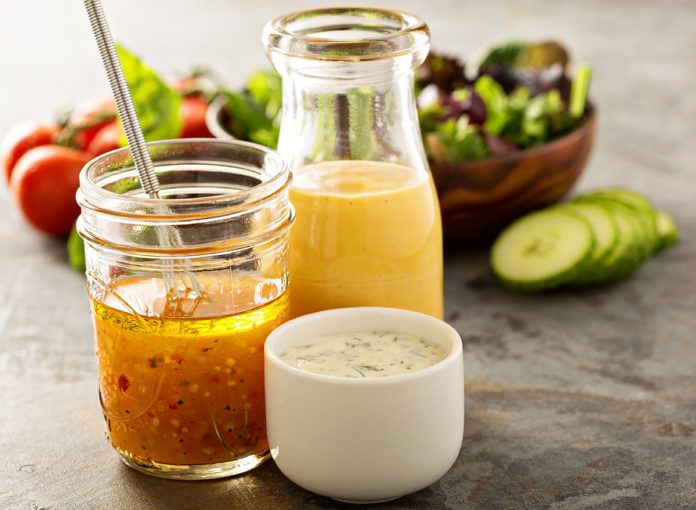If you are working toward starting or continuing a healthy weight loss journey, it is important to be mindful of your nutrition habits. Even regular movement and exercise can be offset by continuous poor food choices. Unfortunately, products at the supermarket will tout their low-fat, diet, or natural ingredients, but sometimes, these same foods and beverages can derail your progress and make you feel sluggish in the process. Yes, there are plenty of foods ruining those weight loss goals of yours.
“If you are hoping to lose weight or simply trying to improve your eating habits, it is particularly important to look beyond the label,” Mascha Davis MPH, RDN, private practice registered dietitian nutritionist, founder of NomadistaNutrition.com and author of Eat Your Vitamins, told us. “Just because many products are labeled as ‘organic’, ‘gluten-free’, ‘natural’, or ‘fiber-rich’, it doesn’t mean that they are necessarily a good choice. It may make you think they are promoting long-term health, but in reality, some of them could have lots of extra ingredients such as added sugars, sodium, and hydrogenated oils.”
By becoming aware of some of these so-called “health” foods, you can set yourself on a path to gaining energy and maintaining your intentional weight loss, instead of being tricked by these foods that are ruining your weight loss goals. Here are 20 items best swapped for whole food options and enjoyed in moderation to help you lose weight and feel your best. And be sure you’re stocked up on The 7 Healthiest Foods to Eat Right Now.
Salads are a no-brainer meal option when you are working toward your weight loss goals. You can combine so many vegetables, fruits, and lean proteins for a nutritional meal, but if you are also loading up on bottled salad dressings, you’ll counteract all of the healthful, delicious items in your salad.
If you actually take a look at the nutrition breakdowns of popular store-bought salad dressings, you’ll see that they not only contain soybean or canola oils, but they’re packed with artificial flavors, colors, and sodium-rich preservatives, along with added sugars (hello, high-fructose corn syrup), and trans fat, according to Harvard research.
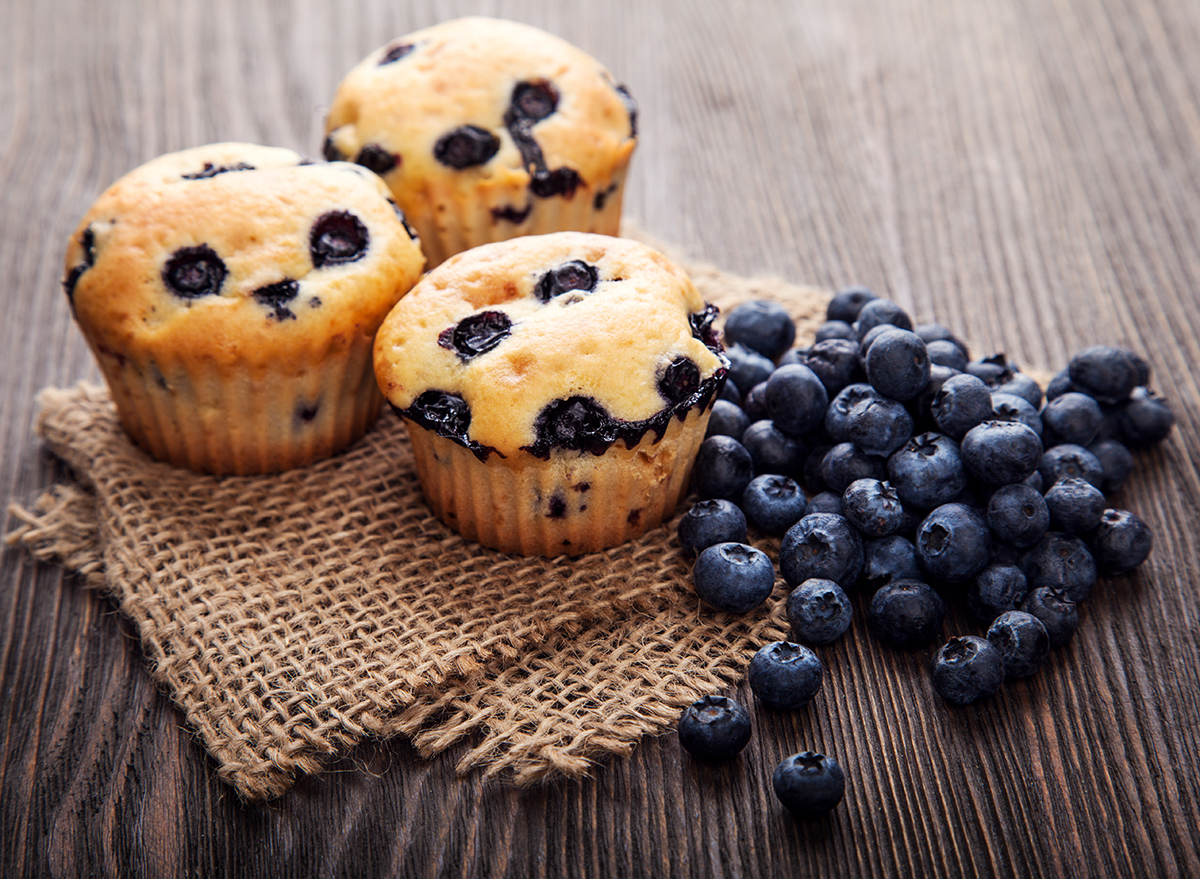
A blueberry muffin sounds innocent enough, right? But before you purchase some from the bakery or café for breakfast, be aware that a typical muffin is actually high in calories and sugar with very little fiber.
However, muffins can be a healthy option if done right, though! Try making smaller muffins at home using whole wheat flour and less sugar—swap sugar for honey, real maple syrup, or even extra fruit for natural sweetness.

Low-fat or fat-free dairy products, particularly yogurt, might seem like the perfect choice for reducing weight, but it turns out that sometimes, the missing flavor from the fat is compensated with added sugars. Rather than an overly sweetened, high-calorie yogurt labeled “low-fat,” “light,” or “fat-free,” opt for the plain full-fat yogurt—in moderation—and add flavor with fresh fruit and nuts.
RELATED: Sign up for our newsletter to get daily recipes and food news in your inbox!

Coconut oil has been in the spotlight for a while now as a healthy option for everything from sauteing veggies, baking desserts, or slathering on your body after a shower. But coconut oil actually has about 50% more saturated fat than butter and raises both good and bad cholesterol levels more than other oils.
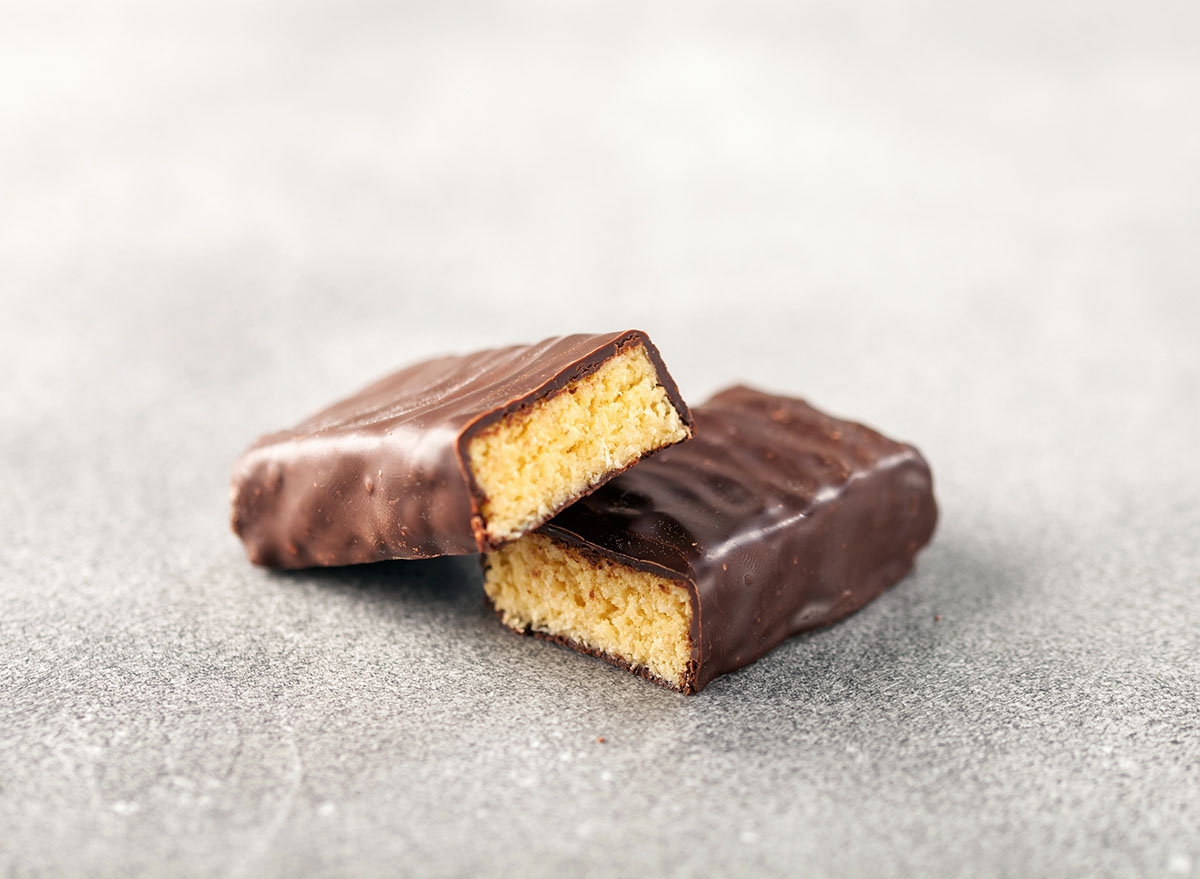
Energy bars claim to give you a boost of protein and energy and are often purchased as a healthy snack or post-workout fuel. But you’re better off enjoying whole foods and lean proteins for energy. Most of the time, these bars end up super high in fat and sugar.

Granola can be filling and fibrous and make for a great snack, but not all granola is created equal. See, some granola is loaded with added fats (like oils and nut butters), sugars, and sodium for flavor. “While incorporating more whole grains into your diet is a good thing, these quick snacks can become a sneaky source of added sugar,” Davis says. “Many of them contain high-fructose corn syrup and hydrogenated oils, which can contribute to weight gain and negative health outcomes.” Look at the ingredients and nutrition facts to find a healthy granola to enjoy.
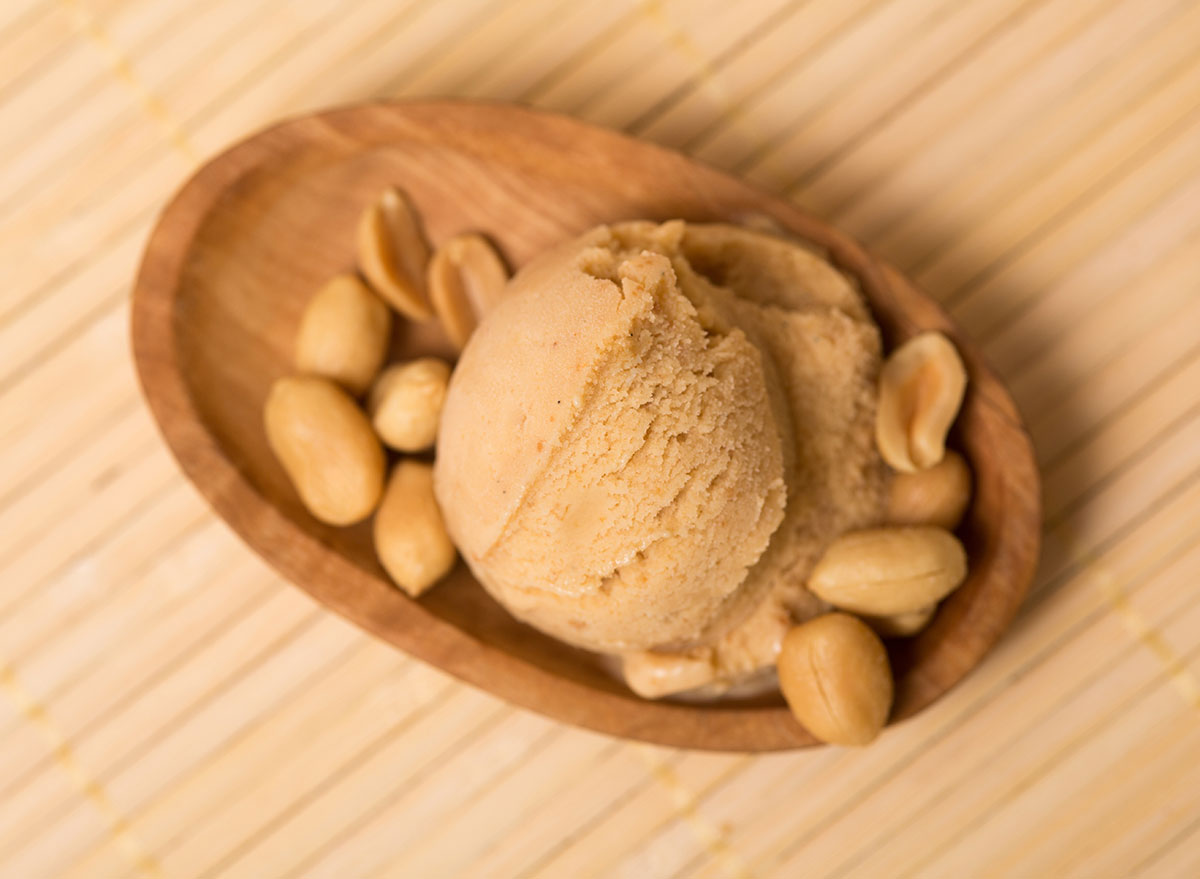
Nuts and nut butters are fine in moderation—great even—but if you aren’t paying attention to portion sizes, you’ll be consuming a lot of fat. Again, you want to be aware of the ingredients. So you’ll want to choose a nut butter that ideally only has one ingredient—your nut of choice. Make sure it doesn’t have any added salt and sugar, or any partially hydrogenated or hydrogenated oils, too, according to Andrea Hasson, registered dietitian at Cedars-Sinai.
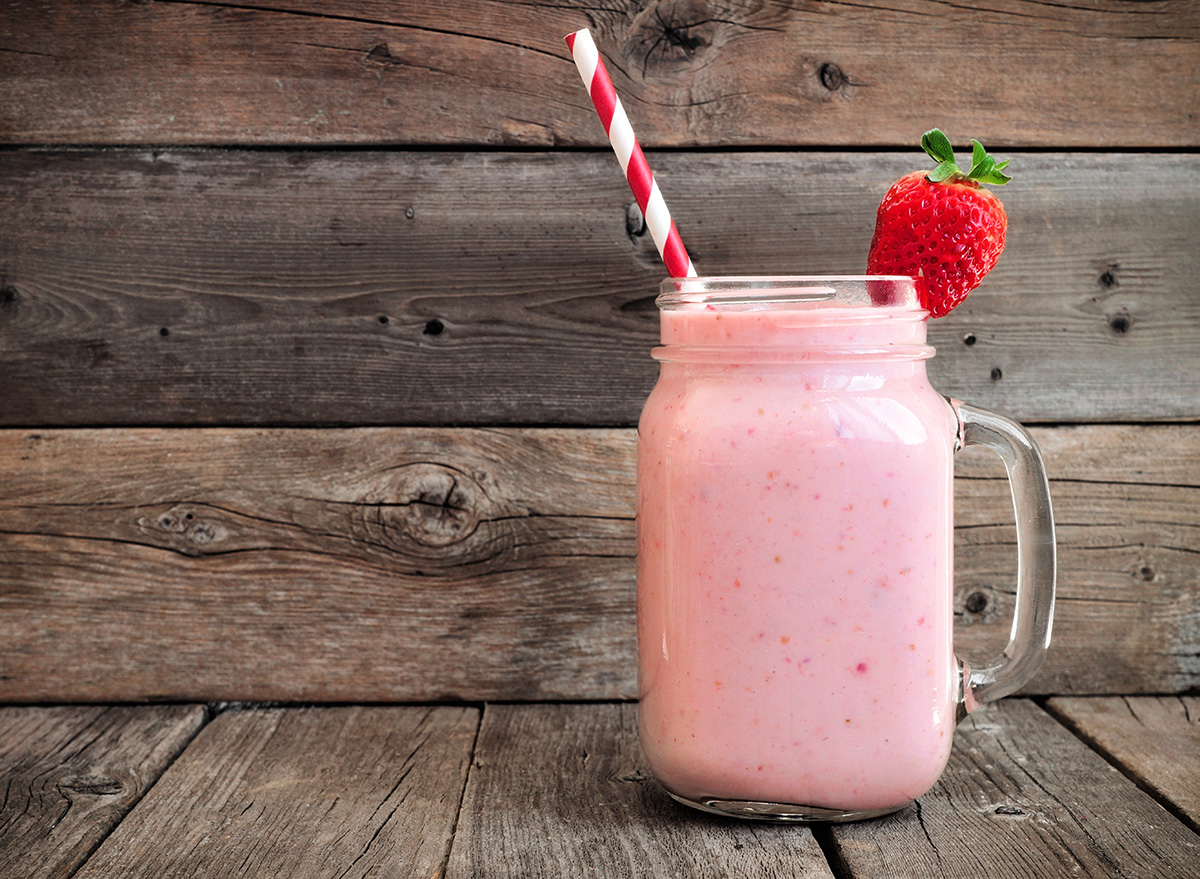
Smoothies are a poster child for healthy eating and weight loss. But don’t be fooled—they can also derail your progress in just a few sips. Smoothies from the grocery store or cafés are typically loaded with sugars, but even a homemade smoothie can have too much sugar and even fat if you are adding milk and nut butters.
Premade protein smoothies can be especially harmful to your weight loss goals. Davis explains that it is always important to read the labels.
“You might be surprised, but some pre-made high-protein drinks have about the same amount of sugar and artificial sweeteners you can find in diet sodas and milkshakes,” she says.
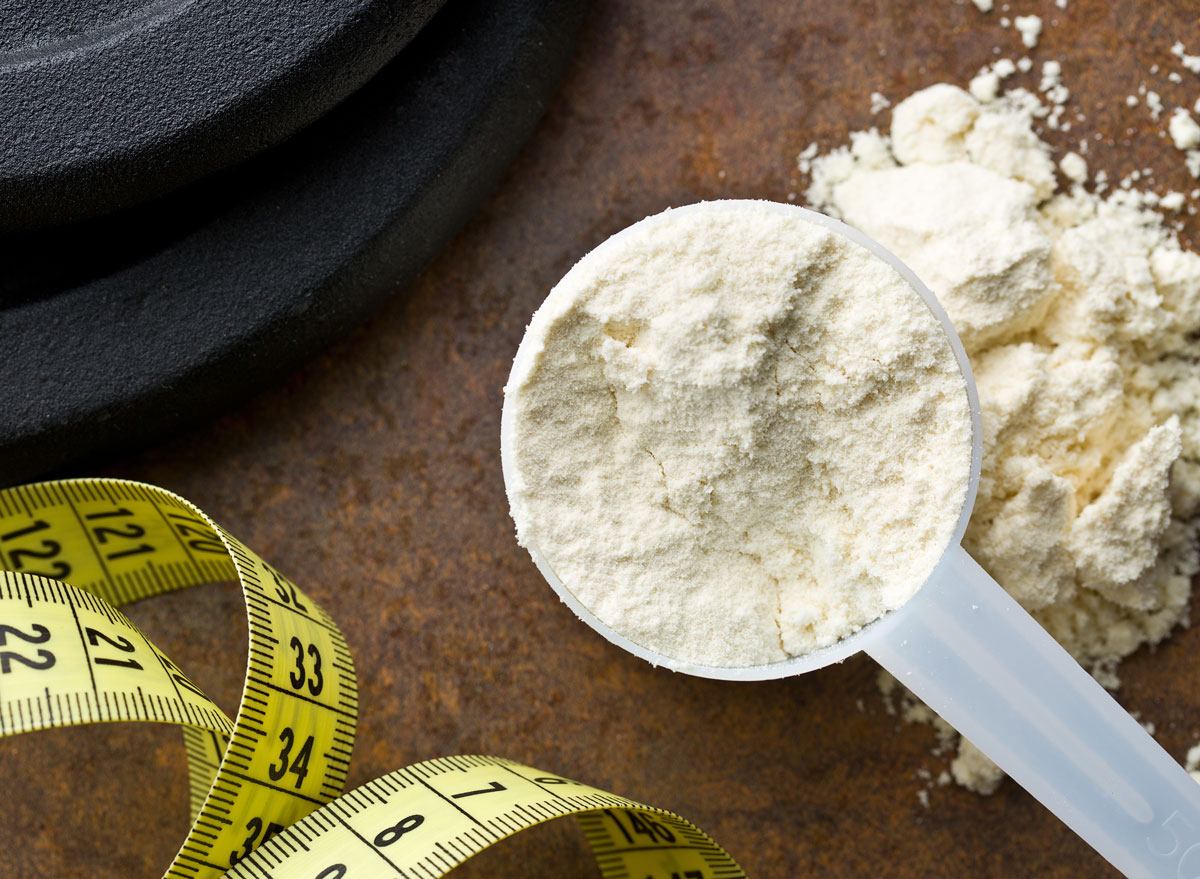
It’s easy to be consumed by marketing that tells you that you need to add protein powder to your smoothies, oatmeal, baked goods—you name it. But some protein powders have up to 23 grams of sugar per scoop for flavor and are high in calories! Protein powders are also a supplement, meaning they are largely unregulated and could contain not-so-great chemicals.
Harvard Health points out that protein powders can make a glass of milk have more than 1,200 calories; instead, turn to whole foods like nuts, legumes, eggs, and fish to meet your daily protein needs.
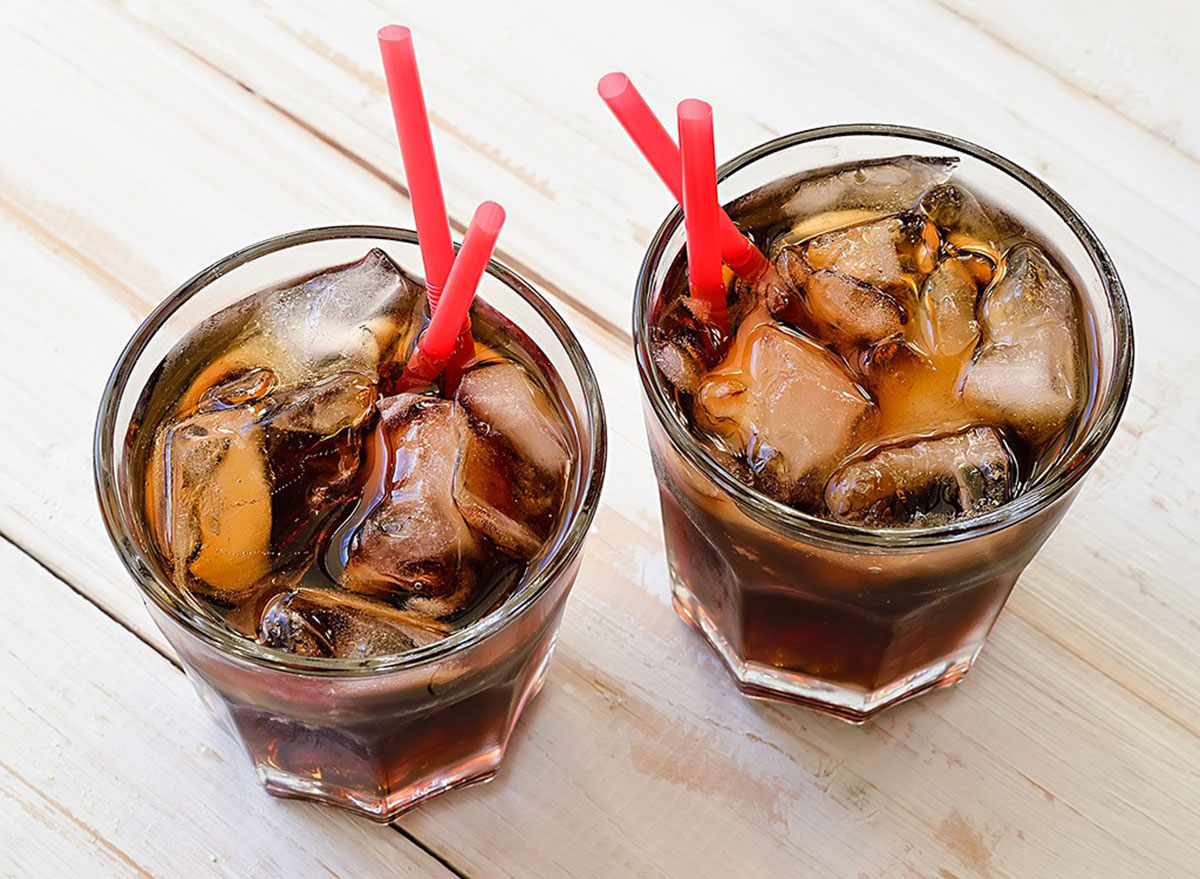
Sometimes you might crave a sugary, carbonated beverage, and diet soda seems like a good alternative to regular soda. But a 2015 study found that diet sodas can actually lead to increased belly fat in adults. “Findings indicate that the increase in waist circumference among diet soda drinkers, per follow-up interval, was almost triple that among non-users,” the study reported.
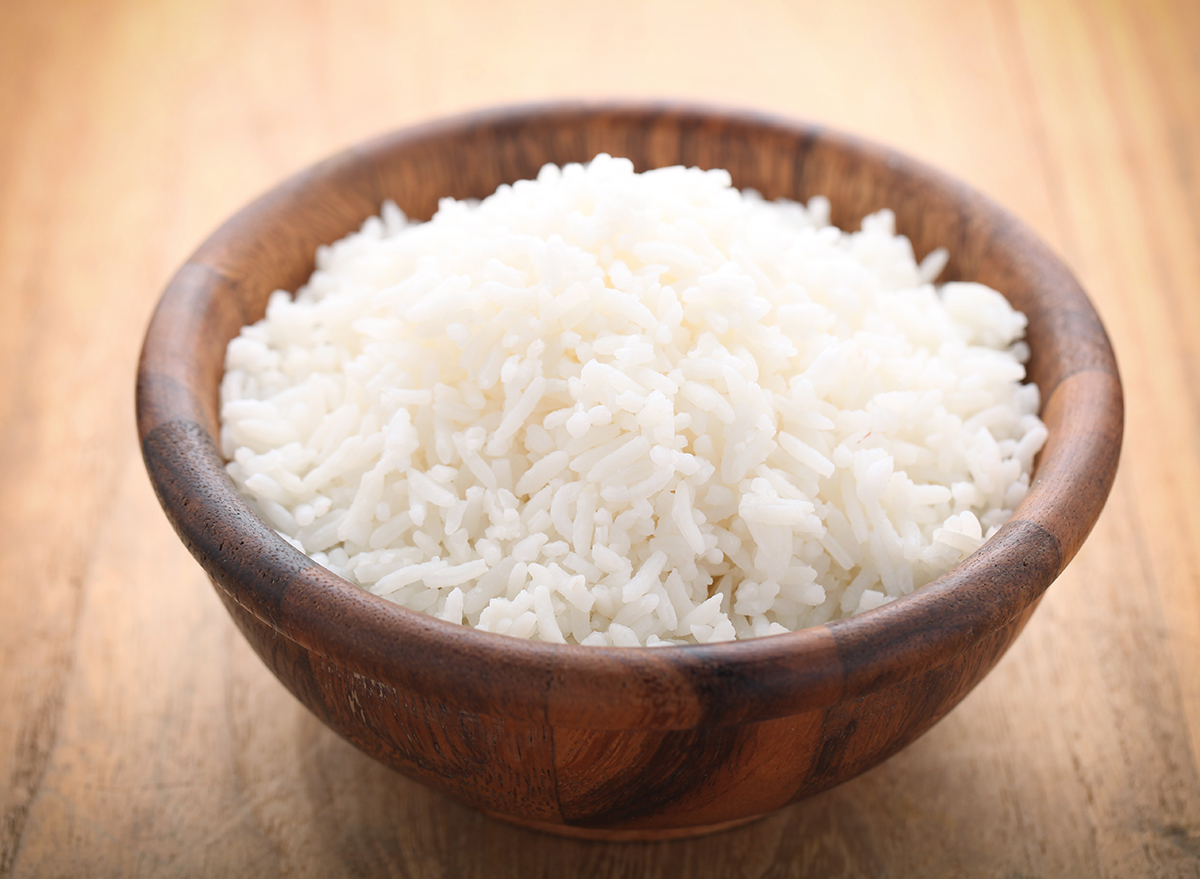
Rice—particularly brown rice—is a healthy option to round out any meal. But white rice has the nutritious layers of bran and embryo removed, which means it is also stripped of fiber, vitamins, and minerals. According to Harvard’s T.H. Chan School of Public Health, white rice has a higher glycemic index than brown rice, meaning it raises blood sugar levels more than brown rice after consumption. The school reported, “The average GI for brown rice is low at 55, whereas the GI for white rice is higher at 64. Observational studies have found an association between a high GI diet and greater risk for type 2 diabetes.”

Popcorn, at its core, is a healthy snack and contains many vitamins and minerals: Vitamins B1, B3, and B6 as well as iron, magnesium, and phosphorus. It is also high in fiber.
Typical microwave popcorn, however, includes added fats and salt, neither of which make for a healthy snack that promotes weight loss.
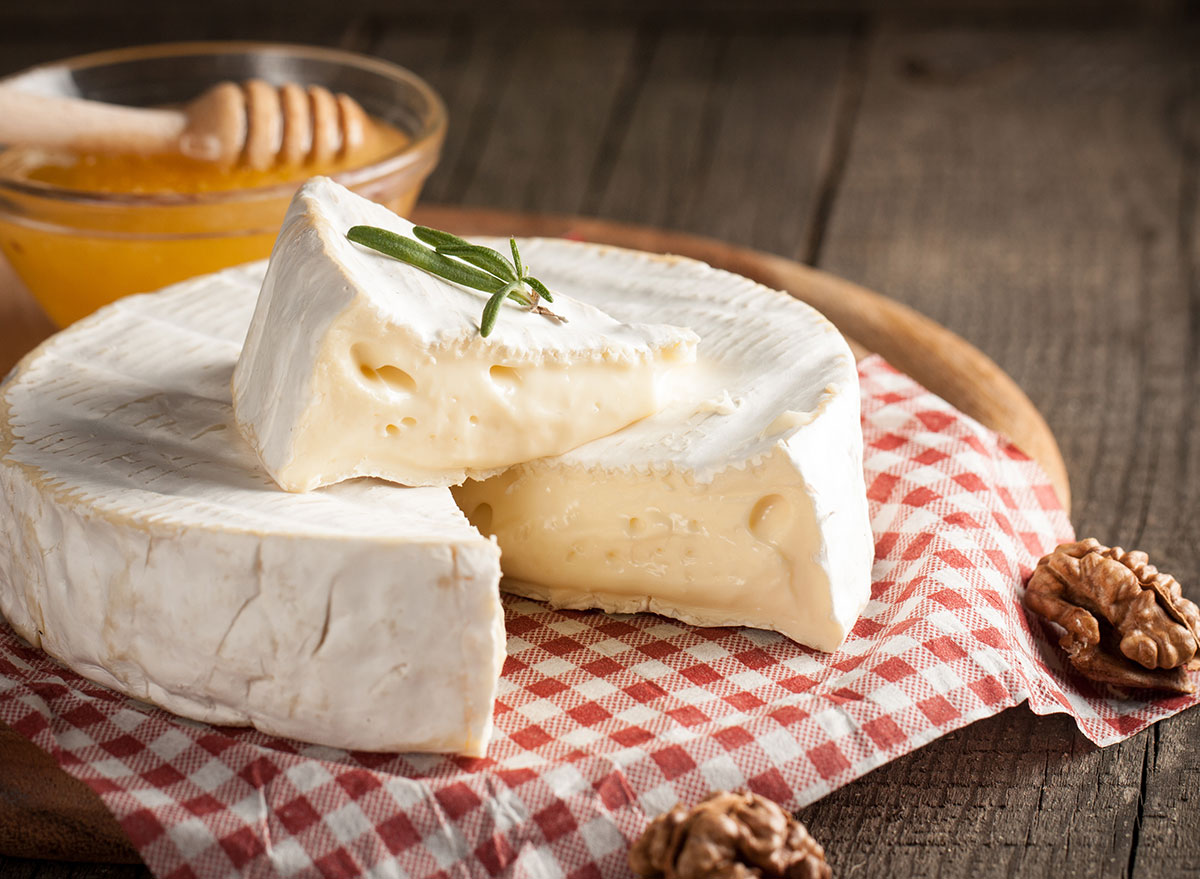
Like most foods, cheese is fine in moderation. The American Heart Association recommends consuming up to 3 servings of dairy daily, with 1 to 1.5 ounces of cheese counting as one serving. But if you are adding cheese to your eggs in the morning, then your lunchtime salad, then your baked potato or pasta at night, you might be eating a little too much. Meanwhile, foods like pizza have far more cheese than you need in a day. One ounce of cheese has about 9 grams of fat, which can add up if you aren’t paying attention to portion sizes.
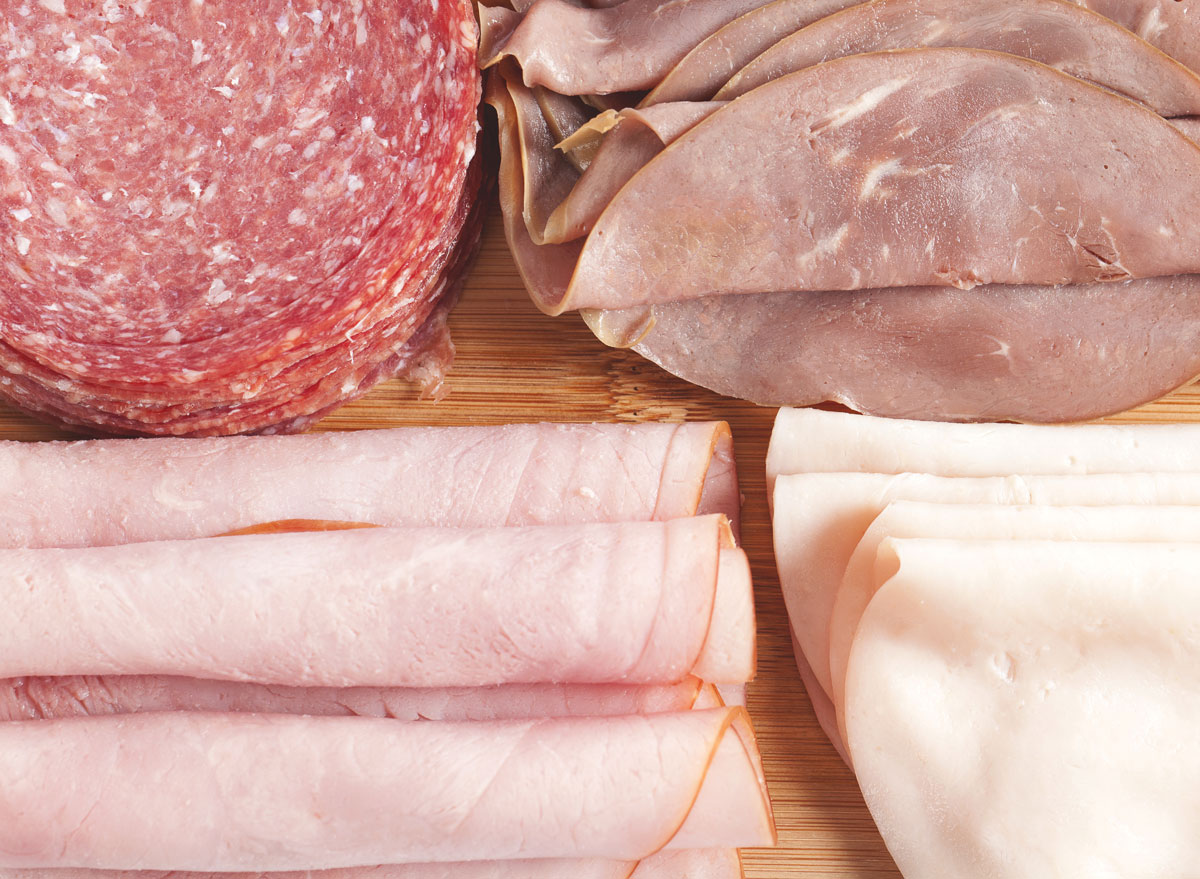
Lunch can be prepared quickly by throwing some deli meat on bread and calling it a day, but these processed meats are for convenience, not health. Harvard’s School of Public Health found that eating processed meats is “associated with a 42% higher risk of heart disease and a 19% higher risk of type 2 diabetes.” These meats are high in sodium and calories, meaning regular consumption can stall progress in losing weight.
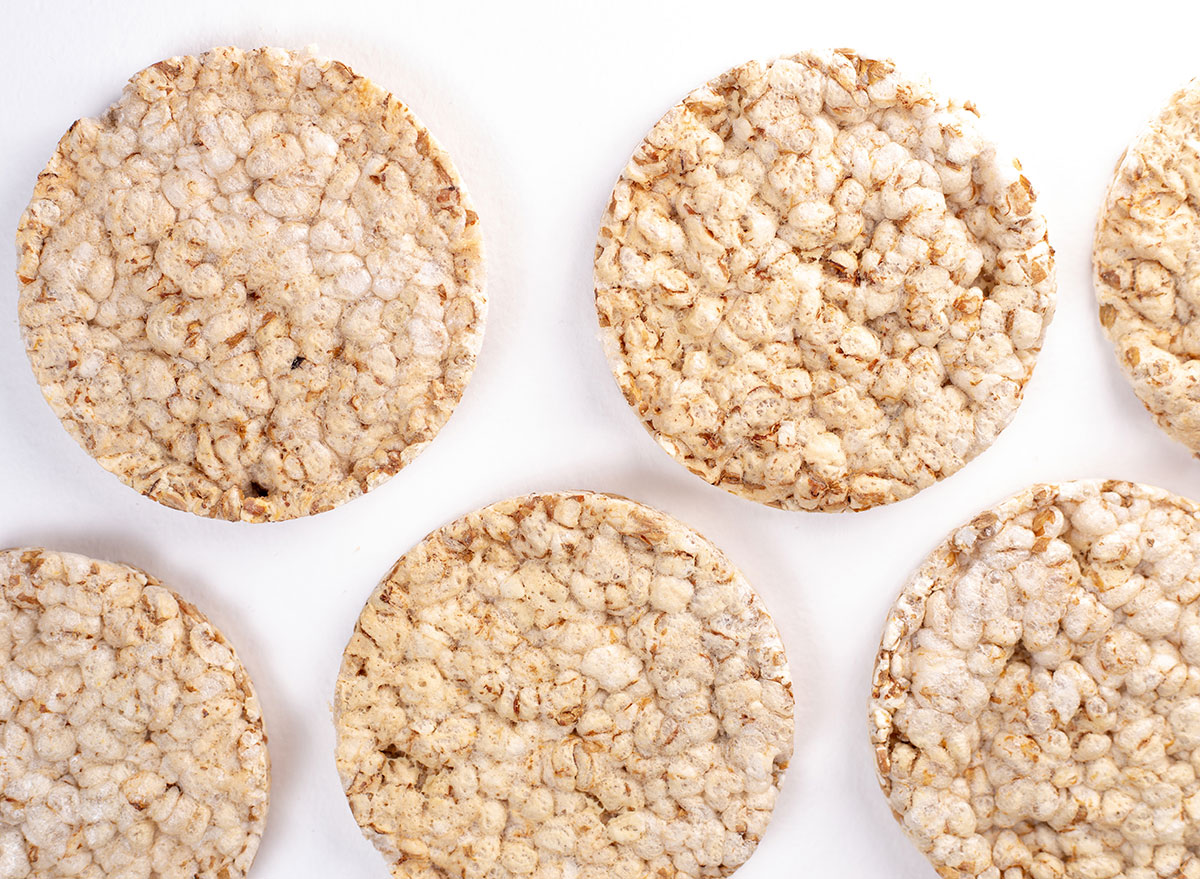
Looking for a low-calorie snack? Rice cakes fit the bill. So how could they possibly be sabotaging your weight loss goals? For one, rice cakes have a high glycemic index and can cause your blood sugar to spike, and they are low in nutrients and fiber. Flavored varieties can be high in added sugar, sodium, or fat. If nothing else, this snack is so airy and lightweight, it can be easy to eat far past the recommended serving size. If you still want to enjoy rice cakes, add healthy, hearty toppings like avocado or hummus to make it a more balanced snack.
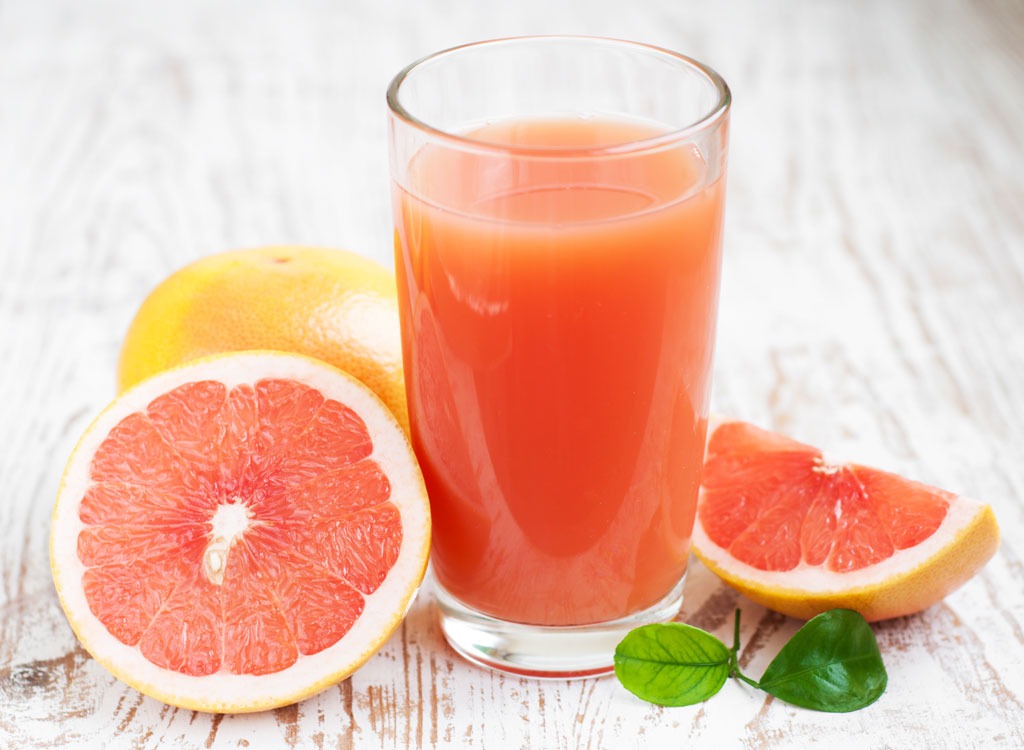
Although fruit on its own is a crucial part of a healthy diet, fruit juice tends to be high in sugar and calories and far less filling than whole, fresh fruit.
“There is no question, those cold-pressed juices you see at the grocery store may contain plenty of health-boosting nutrients, but if they’re loaded with fruit, then they may spike your blood sugar since they are missing fiber,” Davis says. “Therefore, they won’t satisfy you or contribute to the fullness factor, which is counterproductive for weight loss.”
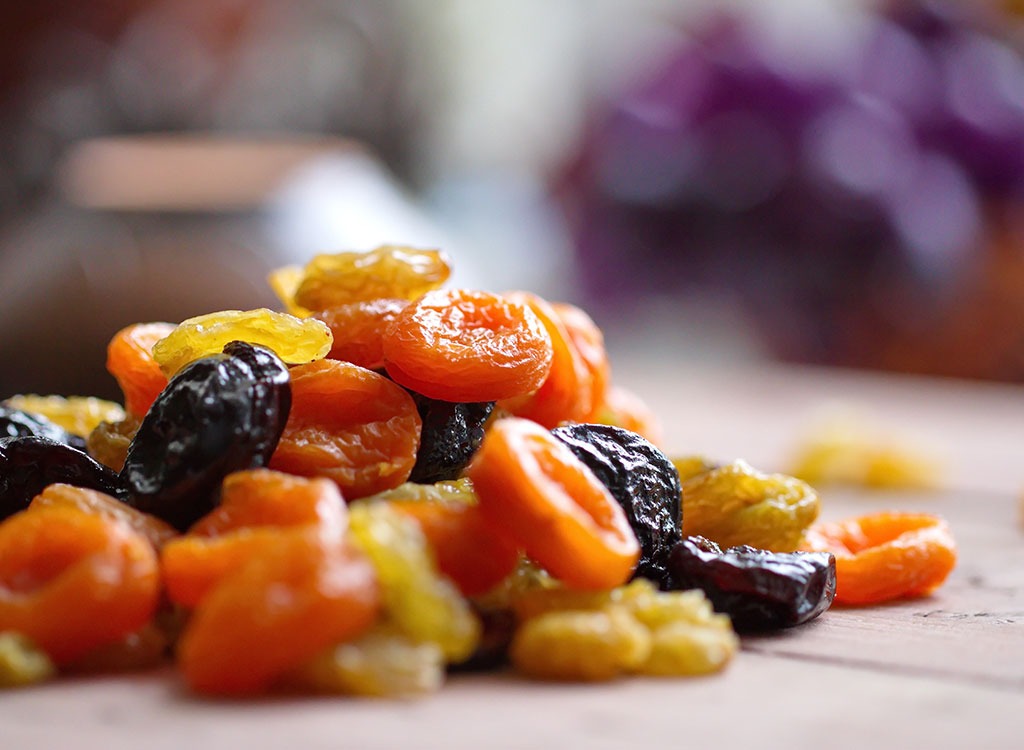
Whether you’re snacking on dried mango or enjoying the raisins in your trail mix, dried fruit can actually be an issue if you are trying to lose weight. Like fruit juice, dried fruit has concentrated sugars and calories. It is also easy to eat more dried fruit than you would fresh fruit, so keep portions in mind if you want to enjoy this snack.

Premade sauces and marinades can make dinner a breeze. While homemade is always best so you can control what goes into it, there is room for some store-bought sauces in a healthy diet. What can make these sauces and marinades so unhealthy is the amount of sodium, sugar, and even fats.

Red meat can offer a lot of protein, iron, and vitamin B12. But some meats are higher in fat, ultimately leading to weight gain. Be sure to choose lean or extra-lean meats with 10 grams or 5 grams of fat, respectively.

What about skipping meat altogether? Drop those frozen veggie patties, as these products are highly processed, according to Dr. Frank Hu, chair of Harvard’s Department of Nutrition.
“Although short-term, a recent controlled feeding study found that diets high in ultra-processed food cause excess caloric intake and weight gain,” Dr. Hu wrote.
Davis explains that veggie burgers specifically are typically made with highly processed soy products and preservatives. “A better choice is to look for veggie burgers made with minimal natural ingredients such as beans, whole grains, and seeds,” she says.
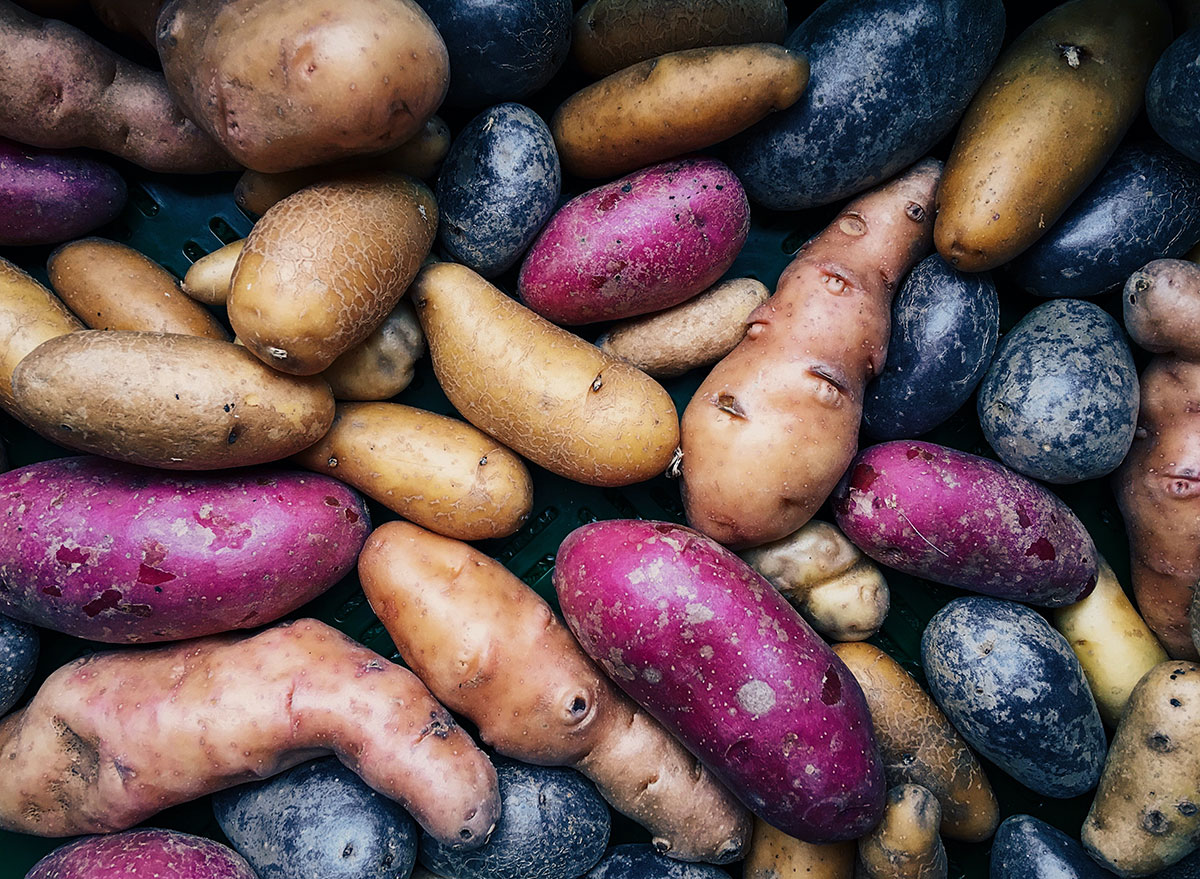
Obviously, chips and fries are likely to lead to weight gain, but keep in mind that potatoes, in general, are a starchy vegetable that can keep you from reaching your goals.
One long-term study found that “foods that contained higher amounts of refined carbohydrates—whether these were added or not—were associated with weight gain in similar ways, and potato products (which are low in sugars and high in starches) showed the strongest associations with weight gain.”
If you do consume potatoes, just be sure your portion is small!

